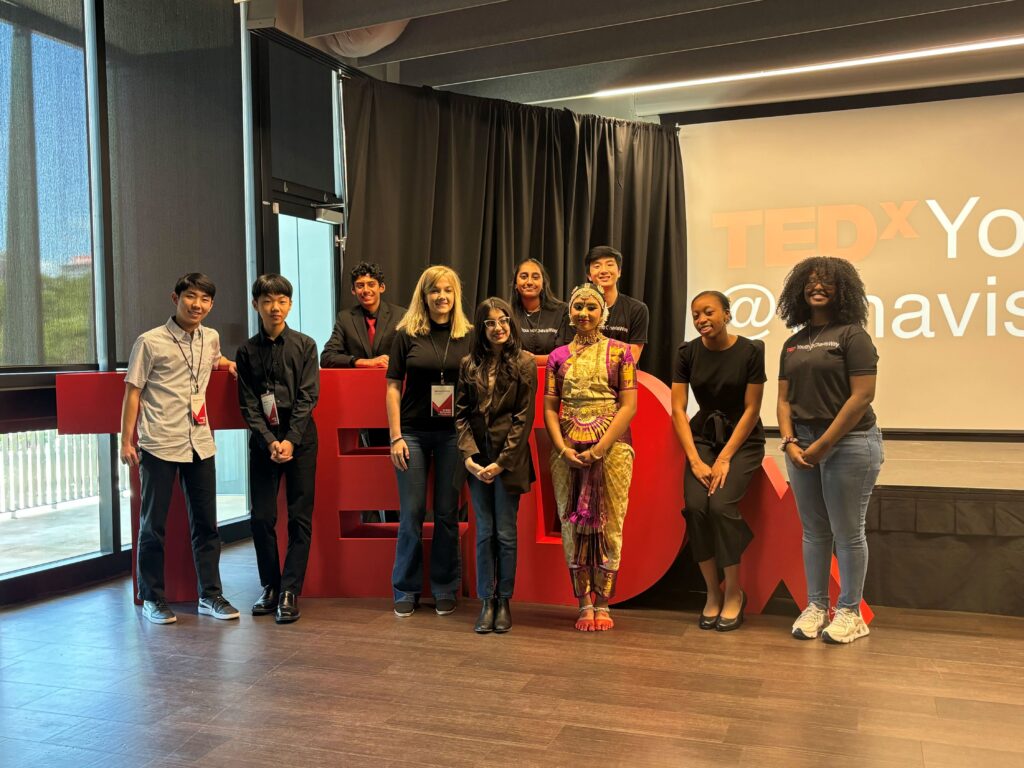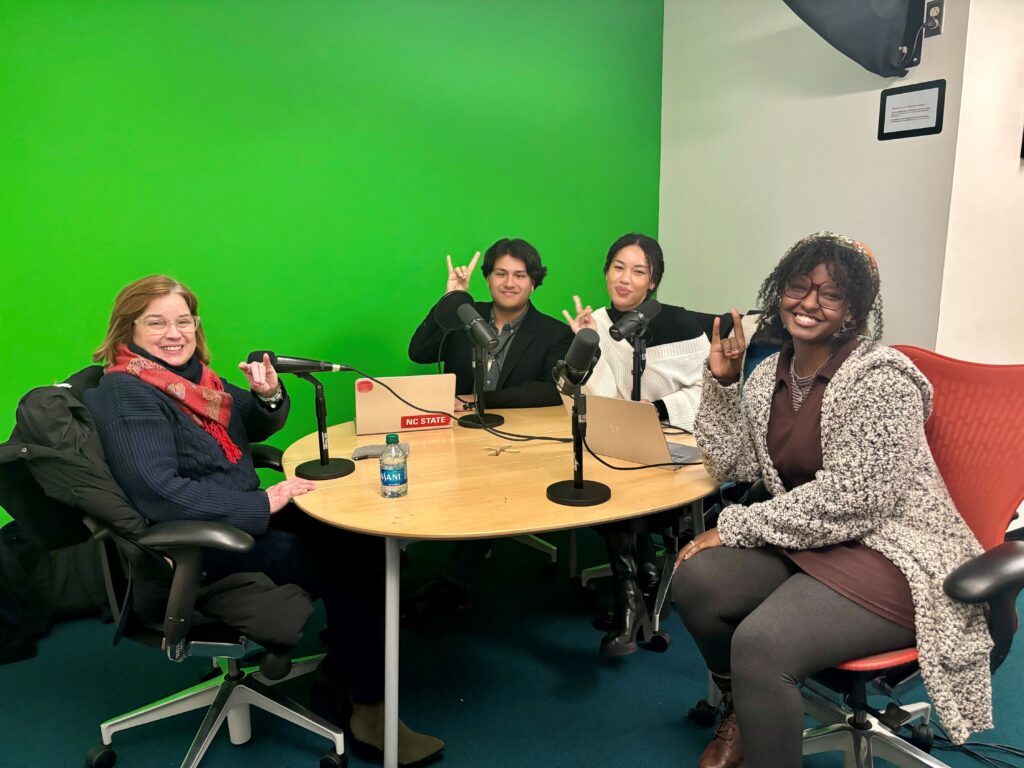Amplifying Youth Voices: Empowering Young People Through Storytelling

In today’s world, where discussions about fairness and equality are widespread, it’s crucial to empower young voices to become agents of change. The #PassTheMicYouth program, co-directed by Maru Gonzalez and Christy Byrd, aims to do just that. Inspired by the power and potential of youths’ stories, this multimedia program shines a spotlight on young people’s contributions and provides educators with resources for developing critical consciousness and integrating storytelling pedagogy into their classrooms and community organizations. The program—which has produced 30 youth-led podcast episodes and 63 youth-authored blog posts and launched 7 youth-led podcasts—includes a Pass The Mic Summer Camp (registration is open!), podcast training, educator workshops, and an annual TEDxYouth event in collaboration with Wake County 4-H and Alliance Health.
At the heart of this program is Amplifying Youth Voices: A Storytelling for Social Change Curriculum, developed by Gonzalez, Byrd, Katherine McKee from NC State and Michael Kokozos from the University of Pennsylvania. Each of its twenty lessons were carefully crafted to develop youth’s critical reflection, strengthen political efficacy (i.e., the belief in one’s capacity to create social change), and drive youth-led community engagement and informed action through storytelling and collaboration. This curriculum is built on the Critical Positive Youth Development (CPYD) framework—also developed by Gonzalez and colleagues—which merges critical consciousness with the Five Cs of Positive Youth Development. It’s a comprehensive approach to nurturing young leaders with broad applications across classroom and community contexts.
According to Gonzalez, “The curriculum was inspired by a vast body of research that shows young people benefit socially, emotionally, and academically when they have a platform to share their ideas and insights and when their perspectives are heard and valued. And we know that young people who are engaged in their communities become adults who are engaged in their communities. Everyone benefits – that’s the power of youth-led storytelling and it’s what we hope to accomplish through this curriculum.”

The curriculum starts by building a supportive learning environment. Through storytelling activities that foster trust, connection, and understanding, students explore shared experiences and diverse viewpoints. As students progress through the curriculum, they dive deeper into critical reflection. They explore concepts of social justice, challenge dominant narratives, and learn about young leaders, past and present, who have made a positive difference in their schools, communities, and the world. This part of the curriculum expands youths’ understanding of societal issues and encourages them to take action to address them.
A key focus of the curriculum is on developing political efficacy—the belief in one’s ability to create meaningful social change. Students learn how storytelling can be a powerful tool for advocacy and activism. They practice crafting compelling and ethical narratives on topics that matter to them, such as environmental sustainability or racial justice and learn to share their stories in ways that inspire action.
Additionally, the curriculum emphasizes the importance of collaboration and community engagement. Through group activities and interactive sessions, students learn how to work together to amplify their messages, create awareness, and mobilize support. By building partnerships and networks, they extend the reach and impact of their advocacy efforts, creating positive change that ripples through society.

The curriculum has been extensively pilot tested with youth between 14 and 22 throughout North Carolina and the results have been universally positive. A recent study by Gonzalez and colleagues assessing the impact of the curriculum found that youth participants felt more connected to and supported by their peers, were more knowledgeable and informed about social justice concepts, believed more deeply in their capacity to contribute meaningfully to their communities, and expressed a greater likelihood of engaging in future social change efforts. By the end of the curriculum, participants began to see themselves as storytellers and change agents and they were equipped with the tools needed to effectively and ethically engage their communities. According to Kokozos, one of the curriculum’s co-authors, “Witnessing the transformative power of storytelling in the lives of young people has been nothing short of inspiring.”
Indeed, the Amplifying Youth Voices curriculum shows the incredible potential of young people to make a difference through storytelling. By giving them the skills, knowledge, and confidence to advocate for justice and equality, this curriculum not only empowers individuals but also strengthens our communities. Up next, the team is working on a book with publishing powerhouse Routledge entitled, Teaching Storytelling in Classrooms & Communities: Amplifying Student Voices and Inspiring Social Change.
In a world where youth voices are often overlooked, initiatives like #PassTheMicYouth and the Amplifying Youth Voices curriculum remind us that every voice, no matter how young, has the power to inspire and drive meaningful change. As we continue to support youth leadership and amplify their voices, we pave the way for a brighter, more inclusive future for everyone. If you believe in nurturing and amplifying youth voices, consider making a donation to the Youth Leadership Fund.